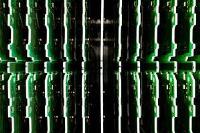 Add My Company
Add My Company
Sign In

Productivity remains a key priority in the manufacturing of printed circuit boards (PCBs) - and one of the simplest ways to improve production yield and keep your costs down is to consider your approach to panelisation at the board design stage.
PCB panelisation is a mass-production manufacturing technique in which a series of multiple smaller boards are connected together as a single array, making it easier for the product to move along the assembly line.
Once completed, the individual boards can then be easily disconnected (or depanelised) in readiness for either packing or installation.
Advantages of panelisation
Panelisation offers a multitude of advantages:
It provides the ability to load parts at a much faster rate
A whole array can be dealt with at once, rather than being restricted to one board at a time
Mass production reduces the cost of assembly and enhances speed and efficiency
The PCB is protected from shock and vibration on the assembly line, which improves product quality and safety
Key panelisation design considerations
Each electronics manufacturer will have their own specific guidelines as to how they set up their PCB arrays for manufacturing.
In order to ensure you gain the most benefits, here are some of the key points to keep in mind:
Panel size - the choice of panel size can make a big difference to the per board price as well as impacting on ordering flexibility. Larger boards will usually reap the lowest unit cost but they can reduce your ordering options. Smaller panel sizes, meanwhile, can offer the advantage of being able to manufacture in smaller runs and produce a better yield.
PCB shape - when it comes to PCB shape, rectangles are ideal - while unusually shaped boards can add complexity to panelisation. If you're dealing with complex board shapes then a CAD programme can be used to rotate or alternate images in order to fit the maximum number of boards onto a panel.
PCB array strength - increasing the board count per panel offers the advantage of increasing strength and reducing vibration. There can however also be a trade-off in terms of the ease of depanelisation.
Component layout - the placement of components and connectors can restrict your panelisation options. In particular, you'll want to ensure that especially sensitive surface mount technology (SMT) components aren't located too close to the edge of the board.
Fiducial markers - the placing of copper pattern recognition pads, known as fiducial markers, will allow your pick-and-place machine to check that each panel has been loaded in the correct orientation. They also provide alignment targets for automated assembly equipment to enable individual components to be mounted in the correct location.
Tooling holes - the addition of non-plated tooling holes in the four corners of the array can aid in alignment and orientation when it is time to assemble the board.
Tooling equipment - standardised tooling equipment can place size limitations on each panel, which in turn can constrain the spacing between boards. When planning your panel arrangement it is important to bear in mind the separation process - and the tooling process that will be required.
Rails - the addition of extra PCB material, known as rails, can be added to the sides of the panel to ease handling during the assembly process. By restricting the number of rails to just two sides, rather than four, it can often be possible to fit a few more pieces on the panel which reduces the per board cost.
Designing your boards with panelisation in mind can offer significant advantages in terms of improving PCB manufacturing efficiency, achieving the best manufacturing yield per panel, reducing lead times and controlling product quality.
But while panelisation can offer significant advantages, it can create a whole new set of challenges if key design issues haven't been taken into account early enough in the design process.
To ensure you receive the most accurate quote, to minimise waste and to avoid unnecessary redesigns, the best advice is to consult with your EMS partner at the earliest opportunity - and better still, to leave the responsibility for the completion of panelisation in their hands.
For more information on Why it is vital to consider PCB panelisation at the design stage talk to ESCATEC Mechatronics Ltd
Enquire Now
More Blogs
List your company on FindTheNeedle.

